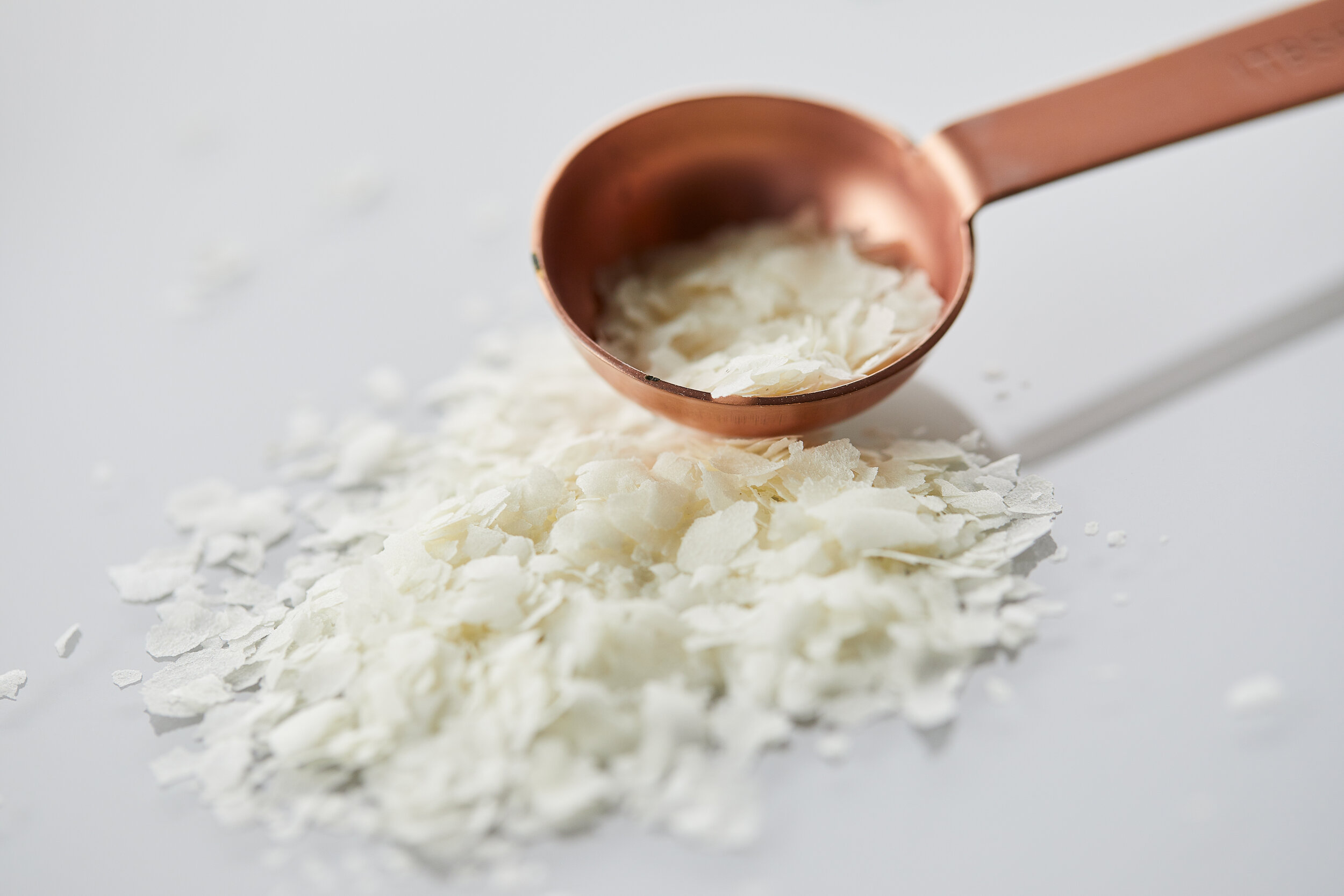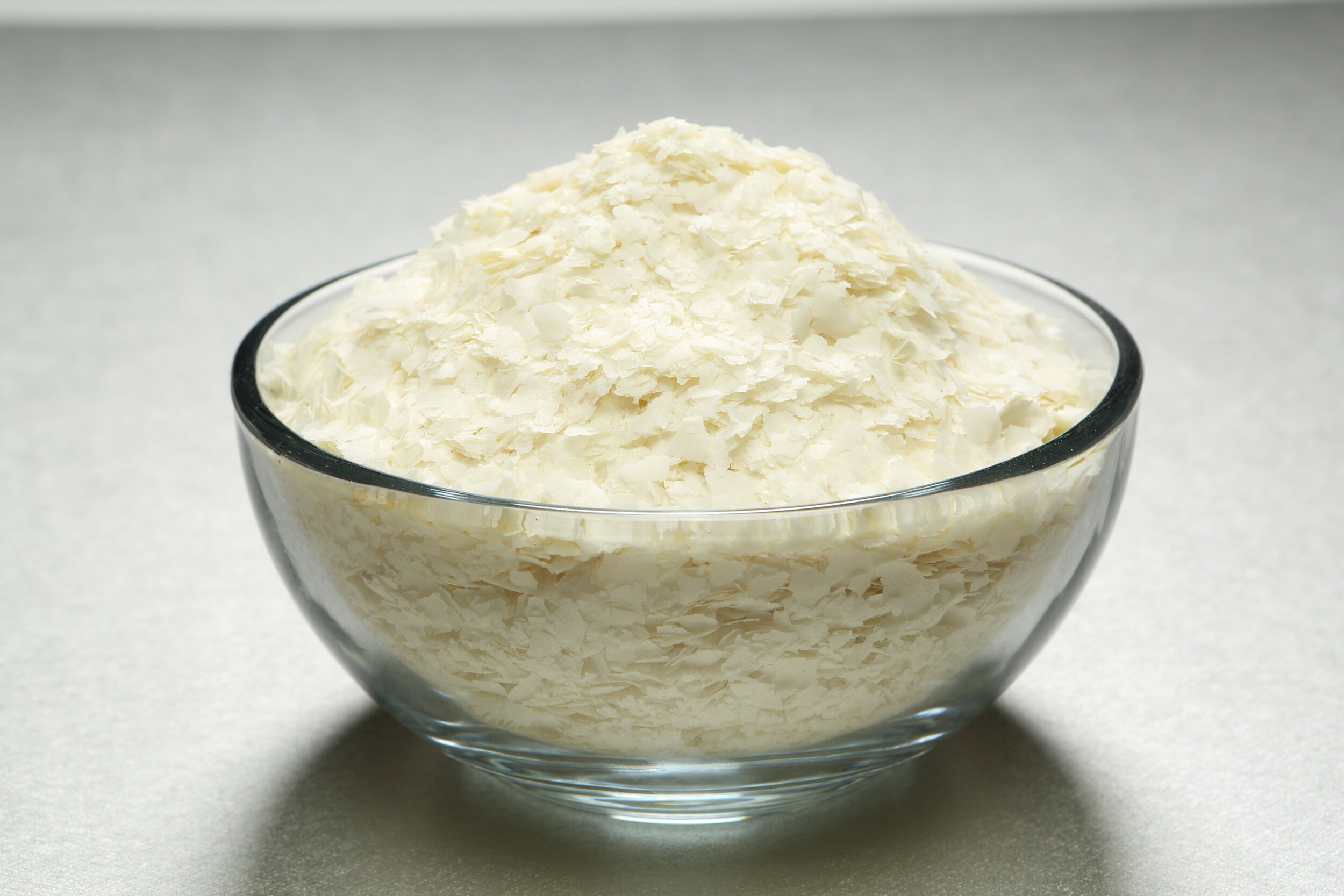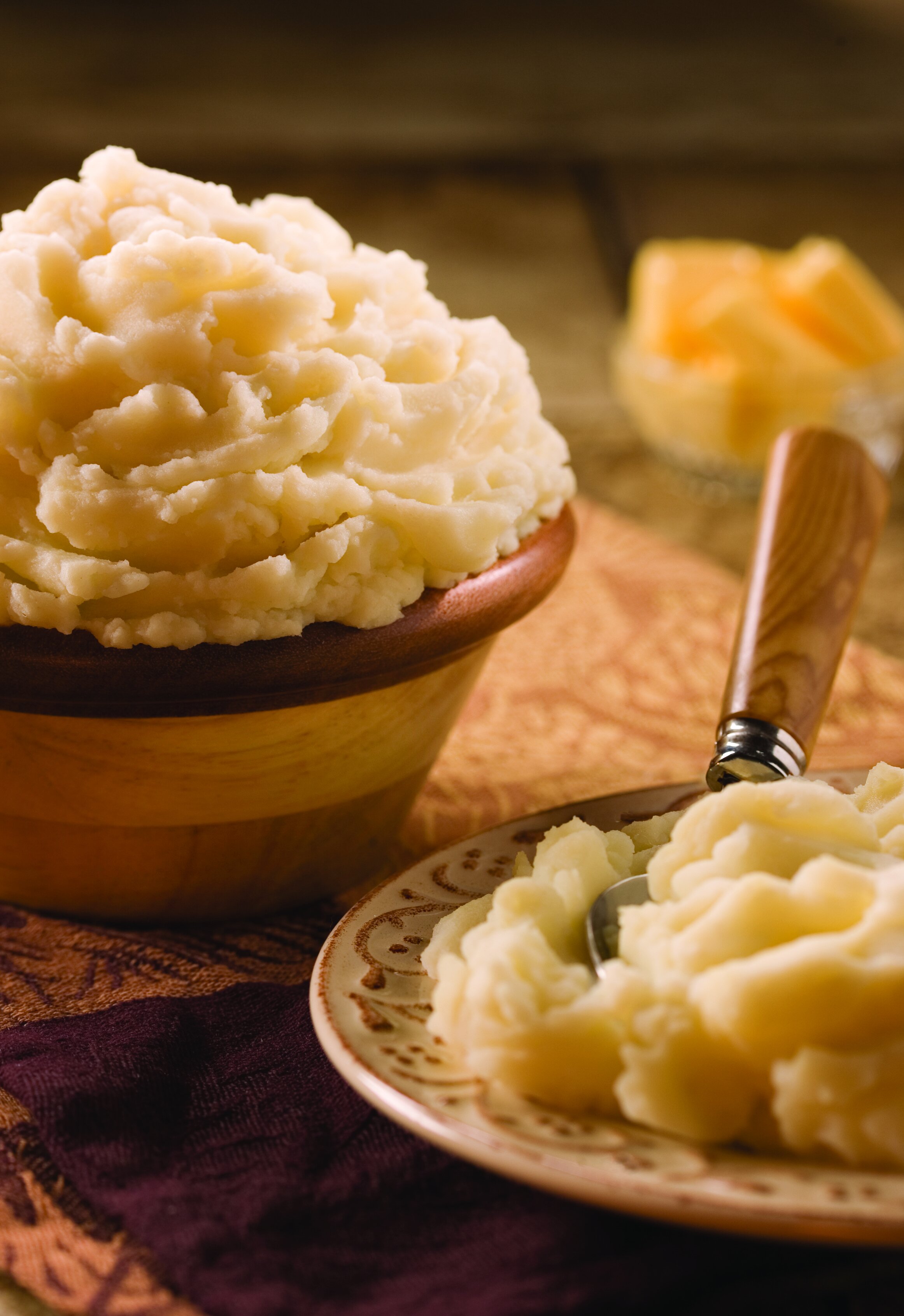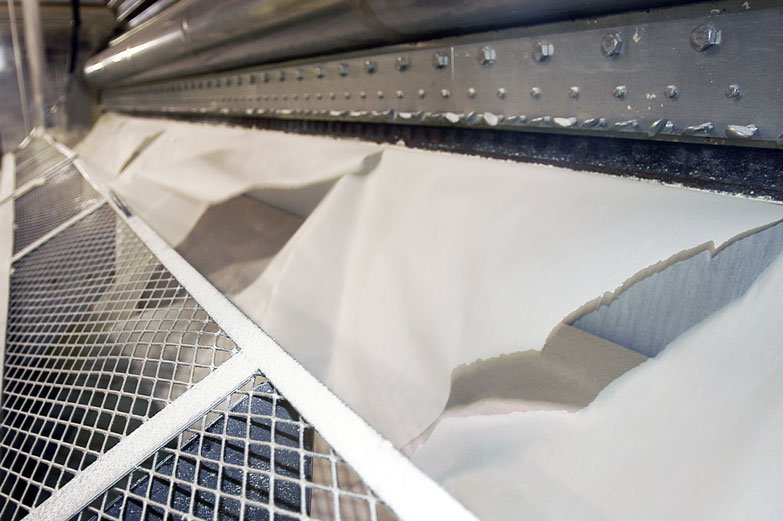
Flakes, used as ingredient solutions to meet a variety of food needs.
Dehydrated Potato Flakes
Potato flakes get their name from the standard look of the product – flake like. The general process starts with a fresh potato that is peeled, cooked, mashed and then thinly spread over a heated drum to be dried. This process was first patented in 1954 by the USDA, however there are patents as early as 1912. Going back even further, the early Peruvians had their own drying process for potatoes over a thousand years ago. The current dehydration process allows potatoes to be manufactured for multiple product applications, extend the shelf life of a potato, and expand the use of billions of pounds of potatoes each year.
Different Flake Types
Depending on the intended usage, today’s potato dehydration process utilizes additives such as Emulsifiers, SAPP, Citric Acid, Sodium Bisulfite and other additives that can be added to achieve the desired product characteristics and attributes. (See below in the Additives section for more information). Potato flakes can also be made additive free, a growing trend in today’s consumer preference.
Potato flakes can be used to make mashed potatoes and as an ingredient in many applications. The versatility of products made from potato flakes ranges from bakery product to distilled spirits (more detail can be seen below in the Production section).
Some potato flake ingredient applications, such as snack food products, desire increased starch and potato flavor. To achieve this, the cook process can be varied so that the starch cells are not completely set, giving the product a higher starch content (stickier), and an enhanced potato flavor.
Reducing sugar levels can also affect how a potato flake performs in an end product. In general, a higher reducing sugar level in a potato flake will increase the browning color in a product if the process involves high heat or frying. Reducing sugar levels can be controlled by carefully selecting either potatoes harvested early in the season or by working with potato storage facilities to store the raw potatoes at specific temperatures to prevent the starches within the potato from changing to sugars.
Flake Uses
Binder
The free starch present in Dehydrated Potato Flakes can be used as a binder in meats and other products.
Breading
Dehydrated Potato Flakes can be used alone or combined with flour, cornmeal and/or crushed corn flakes to create breading for fish, meat, or vegetables. For fried foods, the use of U.S. dehydrated potatoes lends a crispy texture that is difficult to attain with other breading.
Enhancer (Color)
In baked goods such as breads, rolls and cakes, the addition of dehydrated potatoes can enhance crust color, producing a thicker, darker crust.
Enhancer (Flavor)
Dehydrated Potato Flakes can be used to produce potato-flavored snacks and baked goods. When used in bakery products they impart a unique potato flavor and soft mouthfeel to the product. Dehydrated potatoes will produce a unique potato flavor. The potato flavors are mild enough that they complement other flavors in snack foods.
Enhancer (Texture)
Dehydrated Potatoes Flakes will produce products with unique soft eating characteristics (mouthfeel). The addition of potato flakes to recipes creates a moister texture for cakes, doughnuts, breads, rolls and pastry items. Added to snacks, they aid in creating a light, crisp texture.
Extender
Dehydrated Potato Flakes can be added to burgers or patties before cooking, thus requiring less meat per burger.
Gluten-Free Formulation
Dehydrated Potato Flakes can replace gluten-containing ingredients in a range of applications where gluten-free demand runs high.
Shelf Life Extender
At low inclusion levels, Dehydrated Potato Flakes serves as an anti-staling or crumb-softening agent in bakery applications, with no alteration of the taste profile. Because of their moisture retention abilities, potato products slow the drying effect associated with staling. Dehydrated potatoes can be used to replace chemical additives used for anti-staling purposes, giving products a clean-label by replacing chemical additives with the natural dehydrated potato ingredient.
Thickening Agent
Dehydrated Potato Flakes can be added to broths, gravies, sauces, and stews to thicken. Flakes are much more forgiving than flour, which may create lumps.
Uniformity
Dehydrated Potato Flakes can be used in salty snacks such as fabricated chips to create a more uniform shape.
Yield Increase
The weight of the added Dehydrated Potato Flakes and the resulting absorption increase for hydration may increase dough yield for baked goods.
Additives / Ingredients
Mono & Diglycerides
This is an emulsifier which reduces the stickiness of the product by binding up some of the free starch. It is used both as a processing aid – helping the dehydrated potato peel off the drum, and it also assists in improving the texture of the rehydrated product.
Sodium Acid Pyrophosphate
SAPP binds naturally occurring metallic ions in the potatoes, acting as a chelating agent, and preventing those metals from oxidating. This helps maintain the color of the product.
Sodium Bisulfite
This is used to help protect the natural color of the product from non-enzymatic browning (e.g., Maillard Reaction) as it reduces the effect of chemical reaction in the product between the amino acids and reducing sugars.
Citric Acid
This additive also helps maintain the natural color of the product by biding up metallic ions
Color, Spices & Flavors
Some of our value-added product offerings will contain flavors (e.g., butter, salt, etc.) and colors (e.g., turmeric). These typically will be foodservice or retail products.

Let’s Chat
We are here to answer your questions, and help you with your ideas.
Production Process
Shelf Life
Average of 12 months from manufacturing date when stored in cool, dry conditions (<30ºC and <65% humidity) in the original packaging. Please refer to your particular product’s specification sheet as some ingredients and/or packaging may affect that product’s shelf life.










